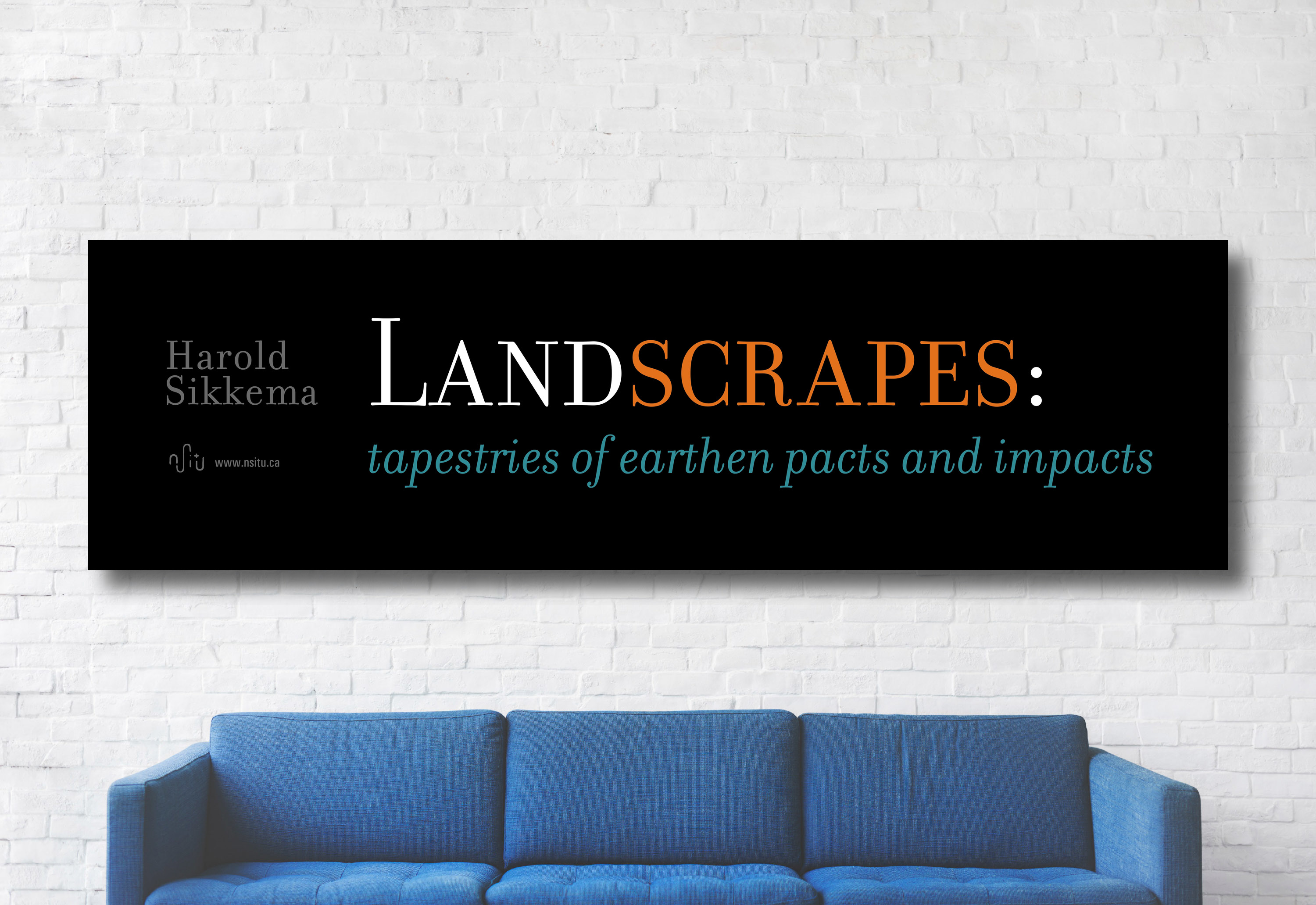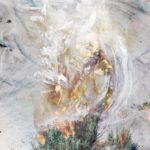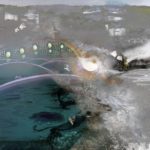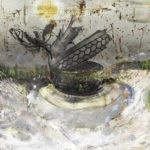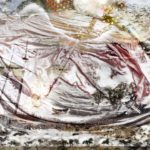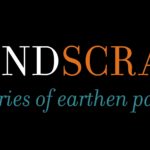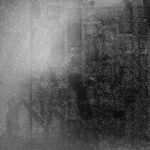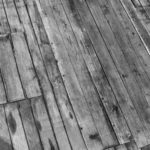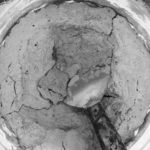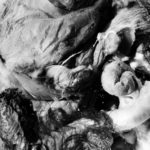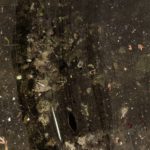FEB 7, 2013
I make digital tapestries. They are hyper-detailed, digital composite images
under acrylic skin, or to put it another way: constructed contemporary amber,
preserving ephemeral traces of life. To gather traces, I employ a camera,
recording a dance of movement and rhythm. It’s a relentless ritual of careful
looking. In my documentation, I discover that cultural and natural landscrapes
are as revealing as our eyes are open. Sometimes a little sculptural intervention
is required, but usually, people and places give themselves away inadvertently.
We are our own paintbrushes, our incidental mark-making peeking curiously
through the thin veil of routine. To reflect on my participation in (sometimes
violent) patterns, I appropriate the evidence through scrupulous megapixel
stitching. Alongside the software that empowers my digital myth-making, I
filter the stories that emerge from these images through my own internal layers
of understanding. These are the life experiences of growing up, traversing
continents, loving my family, and seeking God. My discipline is informed by the
embodied commitments of my faith community. Not unlike a Rothko painting,
Calvinism is visually sparse, but not for lack of wonder or wander. In a tradition
where the primacy of the Word is paramount, (and iconoclasm endures), the
fever pitch of theological hope continues to give me cosmic permission to
imagine.
_______
I get a lot of joy by looking carefully at landscapes. It’s an experience that I’ve made into a life-pattern: habitually recording panoramic vistas at hyper resolution. My camera and imaging tools help me to discover colours, rhythms, and movement in the world. In return for the rigour and discipline that these gigapixel productions require of me, I am nourished and rewarded with ongoing insights about the flow and interconnectedness of all things.
Although Jasper’s Athabasca falls and the grasslands of Saskatchewan are perhaps more iconic, my family’s traditional summer camping trips at Ontario parks have decidedly influenced my appreciation for the living patterns of the land. Whether it’s Big East River’s melodic meander at Arrowhead, or the gentler geology of Grundy Lake, I dig waves on a shore, mussel shells, and oatmeal on a campstove. Oatmeal, as it turns out, presents a landscape of its own. To an opportunist with a macro lens, leftover breakfast, soaking in a non-stick pan undulates with the same graceful vigour as the windswept grainfield to which it owes its existence.
Still, I cannot advise anyone to leave dirty dishes lying around. If we cannot adequately deal with local domestic injustice, how will we hope to tackle the bigger problems we face in our communities? Our gluttonies of oil, sex, and cash remain pervasive in the landscrape of our lifestyle. The evidence is everywhere. Too often, our feet track toxic mud into places that matter. I can recall instances from my childhood when the site of this tracking was my mother’s livingroom carpet. More recently, I feel empowered to ask my mother about the carpet itself. Do petroleum-based products leave sustainable ecological footprints? And, speaking of sustainability, will the aftertaste of a Casino smack of Hamiltonian regret?
The landscrape is complex. I can’t derive a rigourous perspective by myself, on a whim, or through a surface reading. While competing agendas, needs, and narratives, vie eagerly for my authentic listening ear and open wallet, my own use of materials betrays a participation in the very systems that my skepticism interrogates. To unplug from the hubbub, I plug in to the automatic rituals of my art practice, where intuition eclipses my rational, analytical brain. I pursue a routine of gathering, documenting, sculpting and compositing the human land(sc)rape. When my creative flow takes this kind of shape, the movement is not only therapeutic, but has a specific goal: to deliver a library of symbolic and metaphoric resources to represent the evidence for our human choices. It’s all fair-game: exploded truck tires abandoned along a frenetic highway, light-seeking insects ironically perishing in the prison of a lampshade, the slow eastbound drift of heart-shaped toxic Snowbird smoke over John C. Munro Airport: everything that our heads and hands have touched.
I call my particular brand of hand-eye coordination “digital tapestry”, because what I do feels less like a scissors-and-glue collage, and more like weaving on a sophisticated loom (though I benefit from and respect the freedoms won for us by Dada and the Surrealists). My post-process lurks in the deeper corners of photoshop, a gritty weaving of photographic brushstrokes into animated integrity. I strive to place each photo deliberately: a function of rhythm, emotion, weight, and symbolic qualities. It has been said of Georges Rouault that his lines carry “the weight of life”. Lacking Rouault’s dexterity, I content myself to work with what I do have: the raw source material of citations from the landscrape. With the sublime line-weight of a glacier crevice in hand, my only task is to collect these lines and boundaries together and coerce them to dance.
Dancing (and life itself) remain costly. I concur with Ghandi in his autobiography: you can’t actually live without causing suffering. So in some circles, dancing is forbidden, and other forms of flourishing are celebrated. My own ambition however, meanders around this garden of earthly delights, aiming for stewardship also of my kinetic identity. I await only you, my teacher.
EXPLORE
LANDSCRAPES is AVAILABLE FOR PURCHASE
